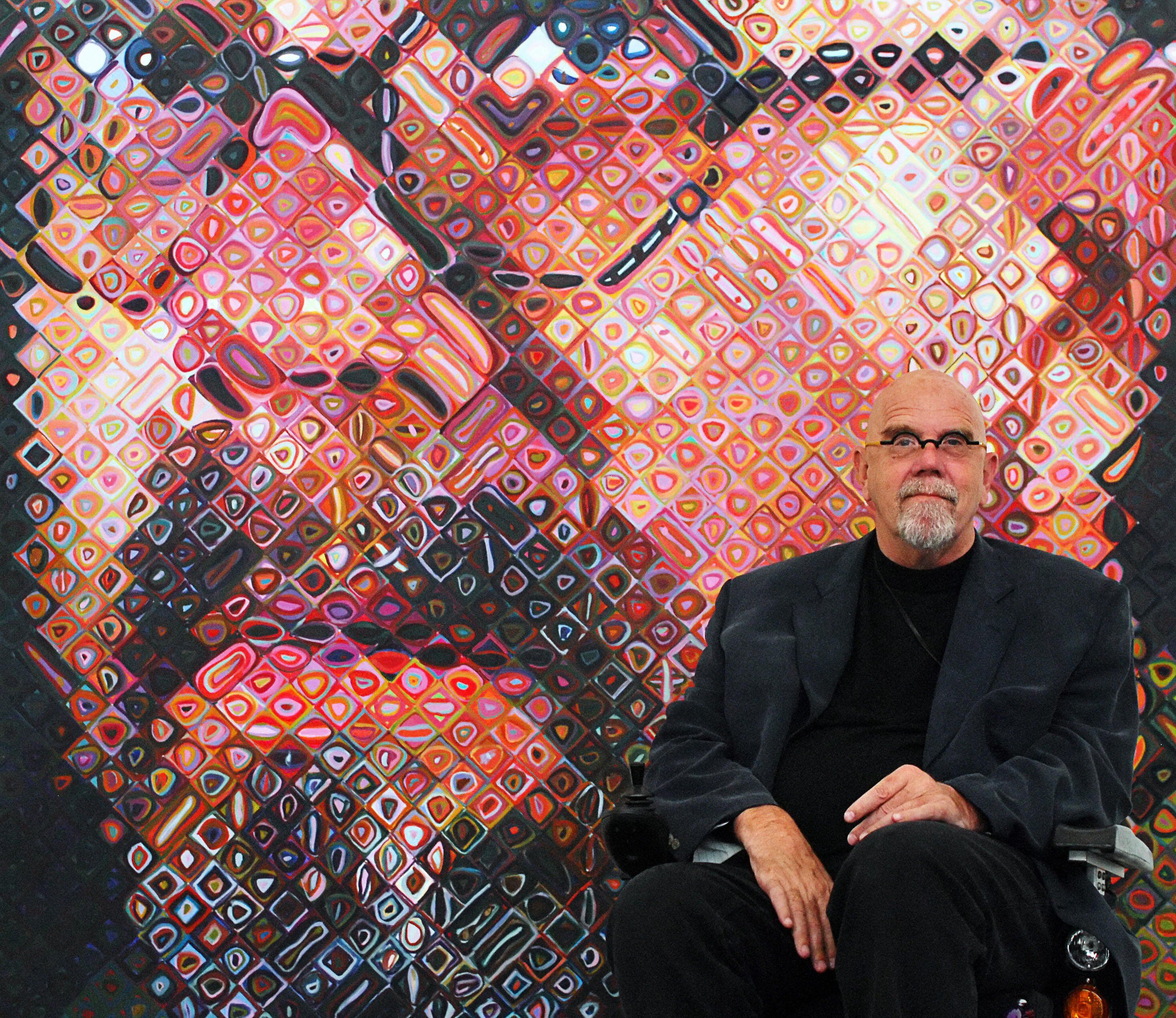
In the summer of 1995, Lisa Yuskavage interviewed fellow painter Chuck Close for BOMB Magazine. Close, then at the height of his career, and characteristically above bravado, only had candid things to say about himself, his artistic production, and the middle-class aspirations he and his family worked towards. “We were the aristocracy of the trailer court,” he mused: “Just joking—we didn’t actually live in a trailer court.”
Given his remarkable legacy, it’s hard to imagine Close in this context. His admission to Yale University’s MFA program would introduce him to contemporaries Richard Serra, Nancy Graves, and Robert and Sylvia Mangold. In 1977, Close joined Pace Gallery where he continues to show today.
With a talent that matches his resilience, Close emerged from his humble beginnings, overcame a spinal artery collapse in 1988 that left him paralyzed, and continued his practice to become a living American legend.
As he told Yuskavage: “I’ve got an optimistic nature, my glass is half full, for which I take no credit at all. People are either optimistic or they aren’t. I find myself unable to blame a person for not trying hard enough, for lying in a corner and whining. They just have a negative world view. When I was in the hospital, I was going to be the best patient that they had ever had.”
Today, the artist turns 76, and the art world is going to town to help him celebrate.